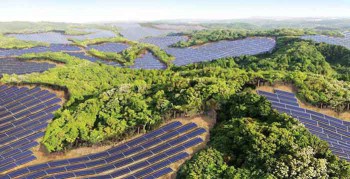Why now is the time for US clean power groups to invest abroad.
In the US, renewable energy, specifically solar power, may have finally reached its tipping point in 2015. Bolstered in part by investment-friendly incentives such as the Investment Tax Credit (ITC) and various state policies, residential US solar installations have grown by 70% in the first half of 2015.
Despite these promising numbers, it remains unclear whether Congress will renew the ITC by 2016, which could mean a major stall in domestic solar growth. Much uncertainty surrounds what the outcome of the anticipated step-down will be: Some speculate that an abrupt elimination of the ITC will render the solar industry uncompetitive, where others view the tax withdrawal as simply a disruption that may be overcome. The Clean Power Plan, despite its opposition, may also provide a smooth transition to segments of the industry.
While policy-makers sort through the potential scenarios – and developers work feverishly to complete projects by 2016 – many solar companies are wisely shifting focus to emerging markets around the world, such as Japan, Africa and India. Focusing now on internationally attuned marketing and business development efforts in these regions could mean the difference between business expansion or contraction in 2016-2017.
The U.S. has already invested $1 billion in solar development in Africa and Asia through its development bank, the Overseas Private Investment Bank (OPIC). However, there is so much to be done it appears there is nothing but opportunity on the global energy horizon.
Emerging markets are figuring this out, and local companies are already making investments in renewable generation. Japan’s own Kyocera has initiated a massive transformation of its overdeveloped golf courses to solar farms, while India has passed an aggressive plan to ramp renewables six times the current level to 60GW by 2022. While India’s plan includes a preference for domestically manufactured products, the country may not be able to meet product demand alone and will likely have to look to international partners to meet this goal.
Vikram Solar is an example of an ideal partner for those looking for well-positioned but perhaps undervalued Indian opportunities. One of the leading module manufacturers in India, Vikram currently sells its modules in 32 markets including the US and India and is currently ramping capacity production to 500MW by 2016. Credited with equipping Cochin International Airport to run entirely on solar power earlier this year, Vikram is one company leading the way to recreating India’s energy infrastructure.
Although 2015 has undeniably been a year of unprecedented solar growth in the U.S., other regions present just as undeniable opportunities. While the US push continues, now may be the time to begin looking at developing markets across the globe – where new investments today could position companies well for an even bigger expansion in years to come.




